Alongside holly and mistletoe, poinsettias are one of the most popular blooms for the holiday season. These stunning red flowers can immerse you in the Christmas spirit. Once December comes to an end, you may be wondering what you can do with your poinsettias.
Here are some smart tips to keep these plants around for weeks.
1. Remove Any Holiday Decor
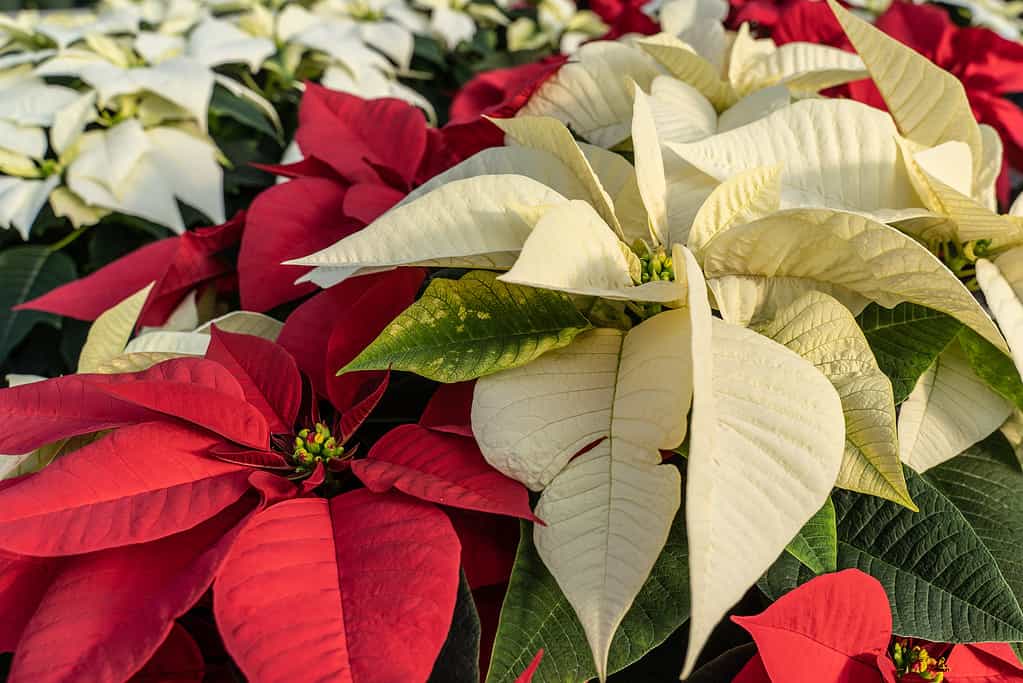
Poinsettias typically grow in white, red, and pink shades.
©arlutz73/iStock via Getty Images
Often, poinsettias are sold in foil wrapping or with petite holiday decor, such as sticks covered with glitter. The first thing you want to do once January rolls around is remove anything decorative or shiny from the plant.
While these things may make the plant look more festive, they can cause a lack of drainage at the bottom of the pot.
2. Repot Your Plant

A poinsettia will do best in a 10-inch pot.
©pundapanda/Shutterstock.com
Some nice fresh soil can help this plant thrive. Repot the poinsettia in the proper size pot with built-in drainage holes. Some people choose to add plant food to help this flower thrive for the months to come. You can keep it in a decorated pot to allow the plant to represent the joy of the winter season.
3. Give Poinsettias Sunlight
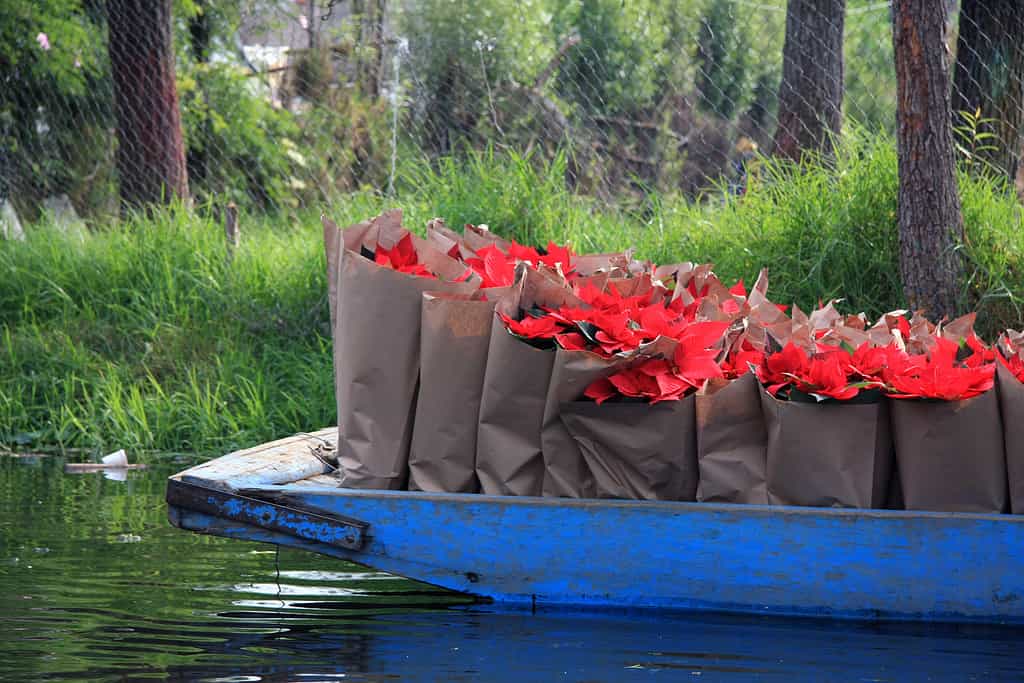
These blooms need at least six hours of sunlight daily to survive.
©JHMimagine/iStock via Getty Images
Like most other plants, poinsettias need plenty of natural light to survive. Find the window in your home that gets the most sunlight each day. Place the poinsettia in front of this window to allow the flower to soak in as much sunlight as possible.
4. Provide Plenty of Water

Poinsettias need to be watered roughly once a week.
©Евгений Харитонов/iStock via Getty Images
If there is one thing poinsettias dislike, it’s drying out. The soil should never be completely dry if this plant is properly cared for. While you want some soil to dry out slightly between watering, just the first inch of soil should be dry from one watering session to the next.
When it comes to watering, make sure the plant has proper drainage. Without holes in the bottom of a pot, the plant can sit in excess water and quickly die. If you don’t have holes at the pot’s base, consider filling it partially with small stones to help soak the moisture.
5. Fertilize Your Poinsettias
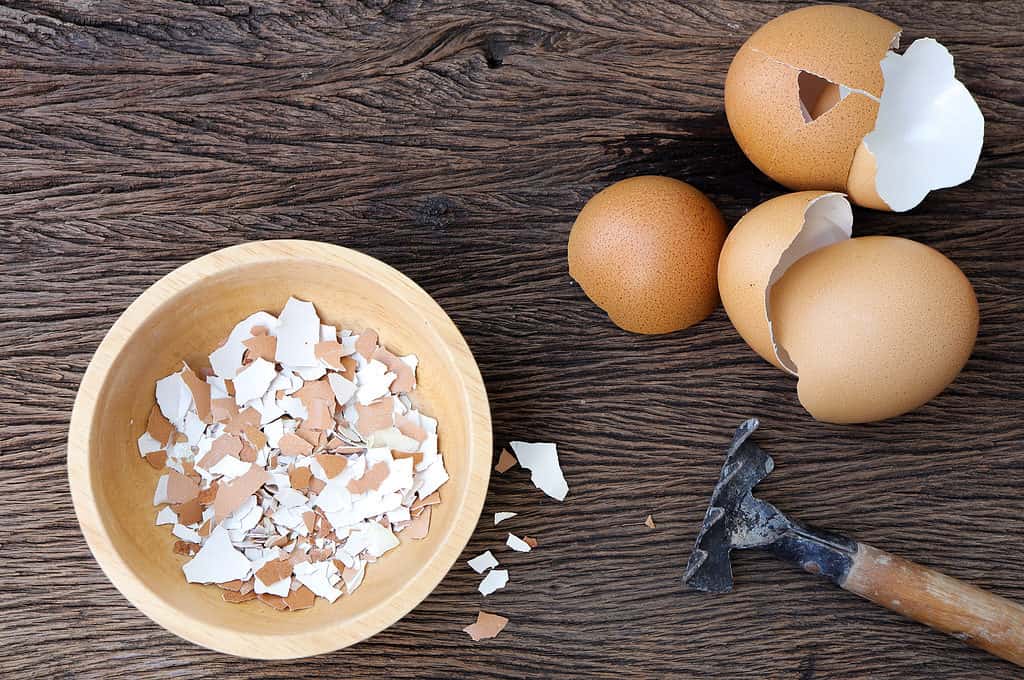
Fertilizer should be used every four weeks throughout the growing season.
©iStock.com/yuphayao phankhamkerd
It’s easy for plants, especially seasonal ones, to lose nutrients over time. Fertilizers can help provide essential nutrients to a poinsettia. There are a variety of natural fertilizers you likely already have in your home that you can add to your plant’s soil.
Here are some of the most common and beneficial natural fertilizers available.
- Eggshells
- Bone Meal
- Banana peels
- Epsom salt
- Coffee grounds
- Manure
- Compost
6. Prune Your Poinsettias

Some gardeners claim that pruning a poinsettia can help them release built-up stress as they gently care for the plant.
©ZoomTravels/Shutterstock.com
The need to prune a poinsettia signifies that you’re doing everything right. As this plant starts to thrive, it can look a little unkempt. A good rule of thumb is to keep all branches roughly six inches long, and you can do so by regularly pruning the flower.
The sap of a poinsettia is known to cause skin irritation. It is essential to wear gloves while you do this task and wash any shears or scissors you use to prevent them from becoming too sticky.
7. Move Poinsettias Outdoors
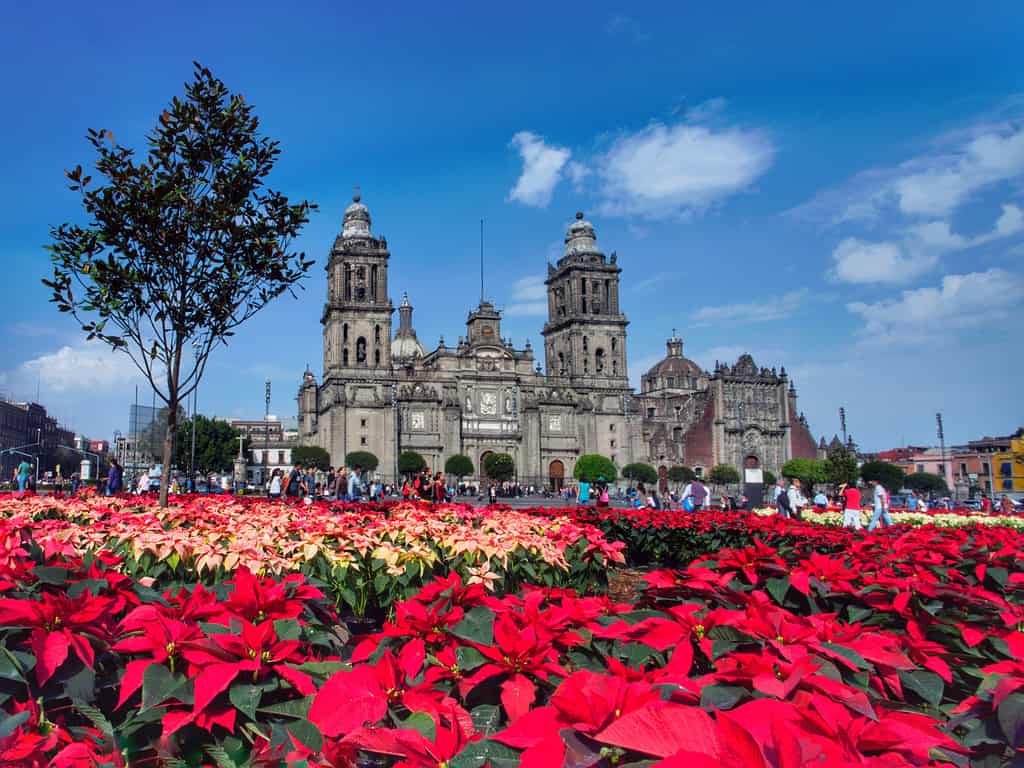
Guatemala and Mexico are the most common places to find poinsettias in outdoor fields and parks.
©Carrie Thompson/iStock via Getty Images
Around June, if your poinsettia plant is still doing well, you should move it outdoors. This gives it a higher chance of making it to the upcoming holiday season. It is essential to acclimate a poinsettia slowly.
Acclimating this beautiful Christmas bloom too quickly will result in damaging burns. Outside weather should be consistently 55° or warmer before moving it outside. When you first place this plant outdoors, please keep it in complete shade for seven days.
After this, you’ll want to give it partial sunlight for two hours daily. Gradually leave the poinsettia out in full sun for longer and longer. Allow your plant to thrive until the end of autumn rolls around!
8. Treat Poinsettias for Pests

Insecticides can be dangerous to children and pets. Be sure to read the directions carefully before applying it to your plants.
©Worledit/ via Getty Images
Spider mites and whiteflies are commonly found on poinsettias. These creatures can destroy the plant you’re working hard to keep alive. There are things you can do to ensure that insects and mites steer clear of your flowers.
While wearing protective gear, including glasses and gloves, apply insecticides to your plant. Many insecticides come in a spray solution that you mist over the entire flower. You can do this to prevent pests before they arrive or kill them once they’ve taken over.
9. Bring Poinsettias Back Indoors
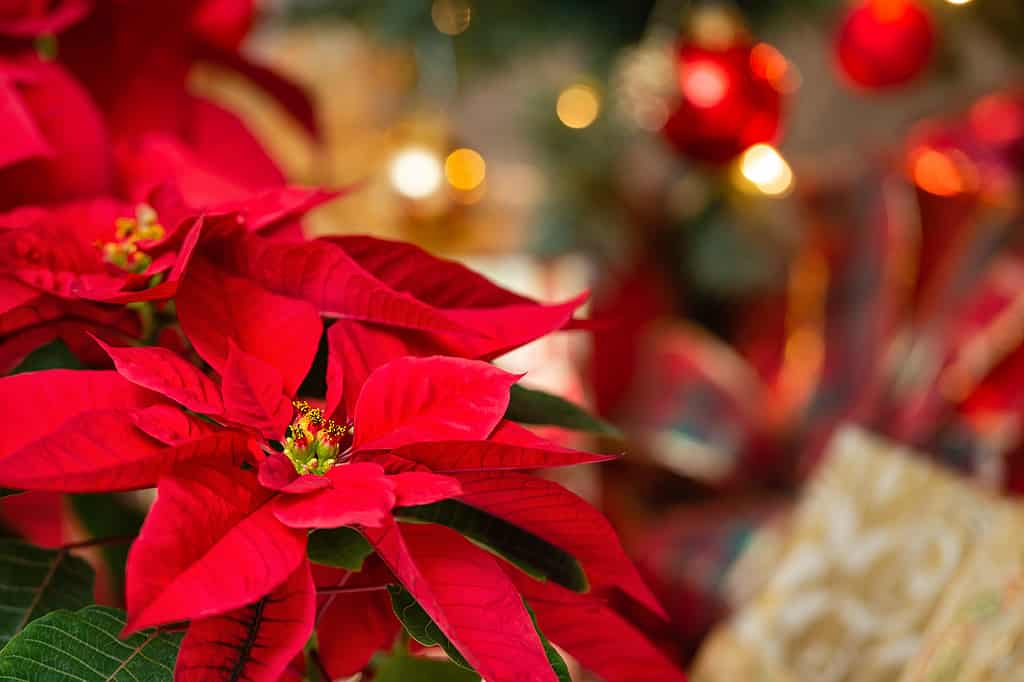
December 12 is National Poinsettia Day.
©leekris/iStock via Getty Images
When temperatures dip below 55° consistently, it’s time to bring your poinsettia back indoors. While this can vary depending on your hardiness growth zone, it’s typically a good idea to bring poinsettias back indoors around the beginning of October.
Start giving the plant 14 hours of darkness per day. It’s common to place a poinsettia in a dark closet when bringing it back inside. Again, slowly allow the plant to acclimate to sunlight over the next ten weeks.
Before you know it, it will be the holiday season once again, and you will have a stunning poinsettia to show for it.
The photo featured at the top of this post is © leekris/iStock via Getty Images
Thank you for reading! Have some feedback for us? Contact the AZ Animals editorial team.







